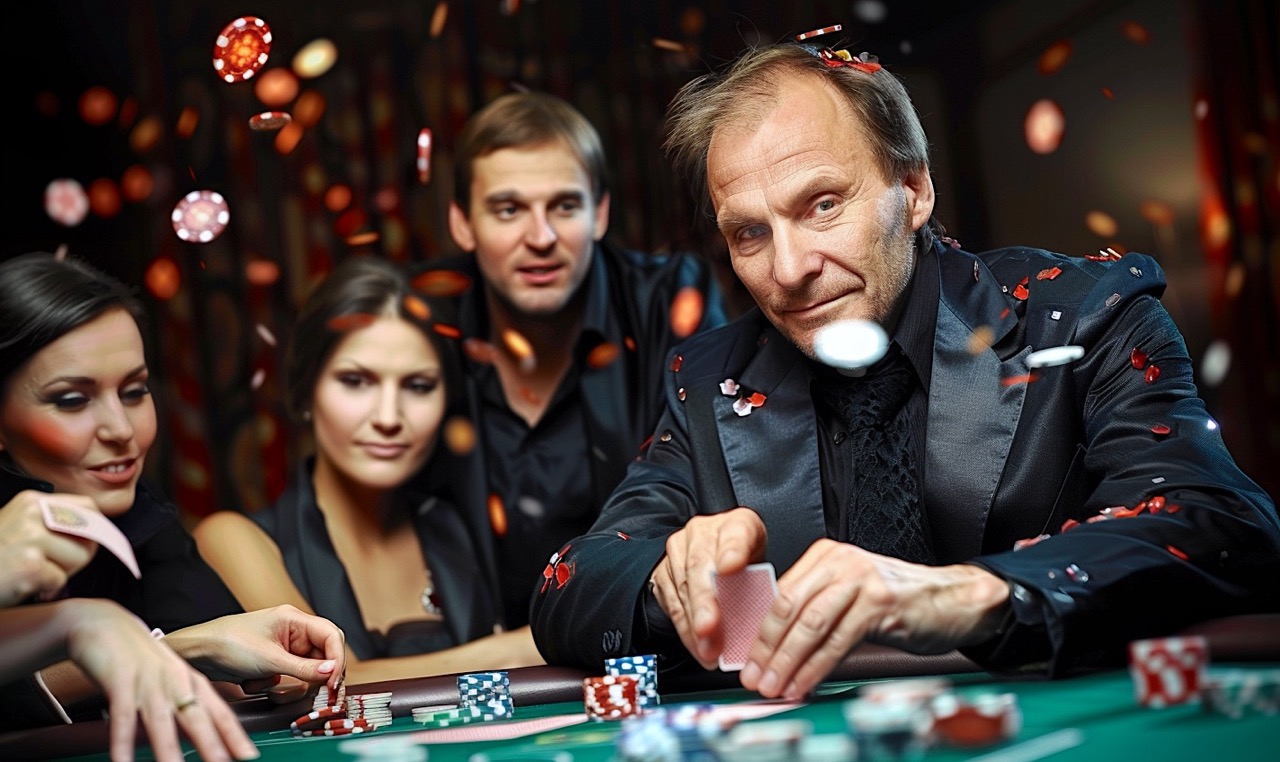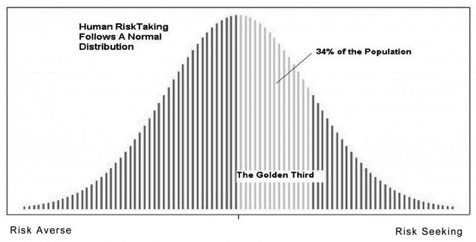Life
How Smart Risk Taking Can Impact Your Life & Happiness

According to the Oxford Dictionary the word ‘risk’ means, “A situation involving exposure to danger”. Realistically, this could range from something as simple as falling over when walking, to losing control of your bike, or even crashing your car; the list of possible dangers are endless.
Exploration in to the world of risk has shown that you can measure what kind of risk taker you are, much like an IQ score. A study with a large group of people will show that, on average, people are neither as low as a number one (averse to taking any risk as small as stepping out the front door) or are extreme dare devils (such as the famous Evel Knievel).
William Gurstelle, the Ballistics and Pyrotechnics Editor for Popular Mechanics Magazine has carried out years of research on risk aversion. It is his belief that a person’s inclination to risk-taking has a profound impact on their happiness and life satisfaction. This ties in closely to the endless asked question of whether we make our own luck in life.
Are people lucky or do they take the right risks at the right time? Science would tell us that lucky people take advantage of chance opportunities more than others; they are more likely to take risks. The more risks you take in life the more chance you have of doing something great.
Gurstelle’s research looked at the two extremes of risk-taking and found that the average person lies right in the middle. However, just to the right of the middle towards the Evel Knievel side of risk-taking lies what he calls the “Golden Third”. William Gurstelle argues: “People who fall into the Golden Third, who are more willing to take risks and capitalise on opportunities, experience the highest index of life satisfaction and fulfilment”.

How Risk Taking Can Impact Your Life & Happiness
THE GOLDEN THIRD
Once you enter the golden third, there is a fine balance in staying there. Advanced Riskology founder, Tyler Tervooren is committed to helping people utilise smart risk opportunities and live better lives through uncertainty. Tyler has granted us his time for an interview to share his insight and advice. The information provided should be able to guide you through the process of making good risks in everyday life.
Tervooren argues that: “Most people take risks because they don’t understand them”.
“We fear that which we don’t understand.”
When you take a risk, like applying for a new job, that doesn’t lead to the desired outcome and you don’t understand why you didn’t get it, especially if you have all of the relevant qualifications, you may be tempted to give up and stop trying again.
“Unless you understand how to take smart risks, this will be most people’s experience with it”. However, spend the time to research and understand what you are about to get yourself into, and then find a way to “dip your toe in”. Validate your big risk by taking smaller, less life altering ones first.
“Smart risk-taking can become a habit, just like anything else can. By repeating the steps necessary to take a smart risk – research, plan, test, evaluate etc. You can integrate that workflow into your habits so that it will always inform the risks you take”.
The fear factor to taking risk is likely to stay, as Tyler states: “as humans, we will stagnate unless we consciously push ourselves”.
Continuous discipline of the mind is essential to knowing how to take smart risks. As it is a fundamental part of the human experience, the more you practice and do it, the more it becomes natural: “Children learn to crawl before they walk. They walk before they run, and they run before they drive cars, fly aeroplanes, so on and so forth. At each step, there’s a fear barrier that has to be overcome”. With many sequences of successes before “you learn something and adjust for the next one which, of course, makes it that much scary to do”.
Advanced Riskology provides guidance on embracing the unknown without promoting any particular action. Tyler suggest that to live a fulfilled life we need to concentrate and improve on the risks that we are already skilled in and address the ones we struggle with, the ones that are holding us back from having the life we want.
He highlights:
“We tend not to notice that we’re good at something until we see others around us struggling with it”.
Even small moves in this area of your life will be uncomfortable, but if anything else Tyler assures that it simply means that “you’re headed in the right direction”.
Always remember there it is a fine art to stating balanced and living in the ‘Golden Third’ and straying into the reckless stage of many thrill seekers. A prime example of this in today’s world would be the guys from Jackass or Dirty Sanchez.
Jane Downshire, a qualified councillor for Teenage Translated, specialises in teenage development and emotional literacy. On a daily basis, she struggles with the challenge of educating the high risk-taking tendencies of teenagers.
Janey offers to share some advice on how to manage risk-taking effectively:
“People must reflect on their actions and assess the outcomes consciously. Without feedback on your actions you can become narcissistic and uncivilised. When the consequences of your actions bare no meaning to you, you can become destructive to the people around you”.
Furthermore, Lynsey Dixon, Head of Marketing at Tombola (an online bingo betting site), speaking on the subject of associated problems with The Golden Third and the ways in which individuals can seek help, said: “In the gaming industry it is important to remember that it is about enjoying the thrill of the game and not about gambling to make money. At tombola, we place huge emphasis on the overall experience. We take our responsibilities seriously and work with a number of organisations to offer support, help and guidance to those who need it and encourage sensible behaviour. It is crucial that individuals stay in control when taking risks, regardless of the situation”.
Conclusion
Know that risk-taking is an important part of development and it is essential to maintain a level of curiosity, motivation and desire to move forward. However, always maintain a conscious awareness of your actions through active reflection and you will learn to enjoy the process of smart-thinking.
Life
Imposter Syndrome Is Rooted in Your Past But Here’s How You Can Rewire It
Imposter syndrome is most prevalent in highly successful women

Imposter syndrome is “the persistent inability to believe that one’s success is deserved or has been legitimately achieved as a result of one’s own efforts or skills.” (more…)
Life
The Surprising Mental Health Tool You Probably Haven’t Tried
Through journaling, I arrived at a more balanced perspective, it reinstated my sense of gratitude and led me to accept my disability

In two particularly difficult times in my adult life, my journaling practice is helping me heal emotionally. It has been a vital tool for helping me see the bigger picture and land in a place of gratitude. (more…)
Life
How to Stop Comparing Yourself to Others and Find True Happiness
Comparison is the thief of joy; it robs us of our happiness, self-esteem, and peace of mind

In today’s hyperconnected world, it’s easier than ever to fall into the trap of comparing ourselves to others. Social media platforms like Instagram, Facebook, and LinkedIn constantly bombard us with curated highlights of other people’s lives, making it seem like everyone else is happier, more successful, and more fulfilled than we are. (more…)
Life
Harness the ‘Battery Effect’ to Transform Life’s Tensions into Your Greatest Strength
Recharge your life batteries by shifting your mindset today

I believe our life capacity is determined by the skillsets we develop on this spinning rock we call Earth. By “life capacity,” I mean our ability to embrace and sustain joy. (more…)
-

 Personal Development4 weeks ago
Personal Development4 weeks agoWant to Change the World? Start by Sharing Your Knowledge
-

 Business4 weeks ago
Business4 weeks ago7 Legal Situations Every Small Business Owner Should Prepare For
-

 Success Advice3 weeks ago
Success Advice3 weeks agoThe One Mindset Shift That Made Me Irreplaceable At Work
-

 Scale Your Business3 weeks ago
Scale Your Business3 weeks agoWhy Smart Entrepreneurs Never Skip This One Business Expense
-

 Success Advice2 weeks ago
Success Advice2 weeks agoHow Playing by the Rules Became the Smartest Business Strategy
-

 Did You Know2 weeks ago
Did You Know2 weeks ago7 Surprising Life Lessons Video Games Taught Me That School Never Did
-

 Success Advice2 weeks ago
Success Advice2 weeks agoHow to Build Trust, Kill Micromanagement, and Lead a Team That Thrives
-

 Scale Your Business1 week ago
Scale Your Business1 week agoHow to Build a Workplace People Actually Want to Show Up To






























1 Comment